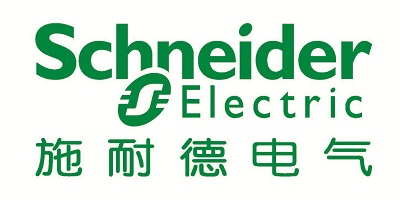
施耐德软件为大家整理了施耐德schneider旗下出品的一些软件,pc端和移动端的都有,在电气方面有着非常强的实用价值,多平台适用,包括了unity pro、somachine、施耐德电气易选通、施耐德触摸屏编程软件vijeo designer basic、vijeo designer人机界面hmi软件、云能效、myschneider、千里眼、机器顾问、风云汇、610变频器说明书、atv212说明书等,欢迎有需要的朋友下载体验!
63.06M / 2017-12-25 / v8.0 免费最新安装版
施耐德plc编程软件unitypro这款软件在众多工程制作中能够带来十分友好的使用界面,让你在进行各类标准化水平的数据监视以及各项结构化程序制作,更好的完成所需的工程设计,定制出最佳的产品!施耐德plc编程软件8.0介
89.07M / 2021-12-07 / v7.51 官方最新版
施耐德电气易选通软件最新版功能非常之强大,可以对电气进行综合管理,有丰富的元器件辅助工具,支持在线查询价格,可以查找项目方案,样本和pdf丰富,还可以看详细的电气知识学习视频,喜爱的朋友赶快下载体验吧!官
243.00M / 2021-12-07 / v1.2 官方最新版
vijeodesignerbasic最新版是非常好用的施耐德触摸屏编程软件,可以和HMIGXU系列的机器配合使用,可以创建新工程并进行模拟,可以创建人机界面屏幕,更好的进行控制,可以显示动画效果,欢迎有需要的朋友下载体验!官
5120.00M / 2023-03-20 / v6.2 sp8授权
vijeodesigner6.2sp8授权版是由施耐德推出的人机界面hmi软件,软件里面有详细的用户手册和产品导游帮助用户快速上手,可以将多个plc连接到单个的控制画面上,组件类型丰富多样,支持进行动画的旋转、缩放等,欢迎大家
10608.63M / 2021-12-07 / v1.2.4 官方最新版
施耐德ecostruxuremachineexpert机器专家最新版是非常实用的自动化编程工具软件,支持在电脑上进行编程、仿真的调试,支持的设备广泛,可以和众多控制器搭配使用,兼容性强,喜爱的朋友赶快下载体验吧!官方介绍ecos
3584.00M / 2021-12-07 / v13.1 官方最新版
unityproxl程序最新版是施耐德plc编程软件,支持在电脑上新建项目,配置plc系统和进行plc的仿真模拟,可以导出数据和功能块,可以看详细的结构视图,还可以直接进行调试,欢迎感兴趣的朋友下载使用!unityproxl特色【
7526.40M / 2021-12-07 / v4.3 官方最新版
施耐德somachine4.3程序最新版是非常好用的plc电气编程软件,支持在电脑上进行应用程序设计,支持管理项目,支持多种控制器,兼容性好,可以便捷的控制机器的运行,是非常实用的plc编程利器,欢迎有需要的朋友下载使
1.45M / 2017-09-15 / pdf高清电子版
施耐德atv610变频器说明书是由施耐德官方提供的免费变频器使用手册。为网友们提供了atv610变频器设备详细的功能介绍和操作使用说明。如果您购买了atv610变频器,可以来绿色资源网站下载此文档安装使用哦! ATV610变
3.77M / 2017-09-15 / pdf中文电子版
施耐德atv212说明书是面向施耐德变频器用户整理的产品使用手册。通过此文档,可以了解到施耐德atv212变频器的各项性能,提供了详细的安装、使用、维护说明。喜欢电子版说明书的朋友可以来绿色资源网下载使用。 atv2
12.20M / 2021-10-26 / v4.3.0 安卓版
施耐德云能效手机版能够实时的了解自己跟踪的能源方案的各项情况,拥有一键数据查询的功能,支持快速方案发布的功能,支持对各类方案的生命周期进行管理,了解实时的能源使用情况!施耐德云能效app介绍“云能效”是施
46.4MB / 2025-06-16 / v10.56.8 最新版
施耐德千里眼手机版是一款可以用来监控电气工作流程的视频监控软件。为电气巡检工作人员提供了远程可视化的电气采集、故障报警、现场照片取证等功能。非常适合工程师用户使用!通过对人员、设备、项目的智能化管理,实
37.16M / 2021-11-03 / v12.9 手机版
myschneider安卓版为你带来最佳的施耐德官方app,在这里你可以订制自己相关的服务,直接和工作人员沟通,需求转述方便,还能查看自己购买的设备物流信息,操作简单,使用方便,轻松获得最佳的体验!myschneiderapp内
36.48MB / 2025-07-18 / v4.19.0 安卓版
施耐德风云汇是一款专为施耐德电气设备的数字化管理而设计的办公应用程序。无论是设备的具体信息,还是其在网络中的位置,皆能被准确标示。当设备需要维修时,用户能够迅速定位问题并找到适当的操作方案,从而轻松解
10.62M / 2023-09-26 / v4.12.1 安卓最新版
施耐德机器顾问是专门为施耐德公司旗下的设备设计的管理app,在这里你可以查看设备的详细情况,在运行中有什么不对经的地方抢先知道,带给你高效率的办公方式!除此之外,设备检修等也能在这里完成!机器顾问app内容